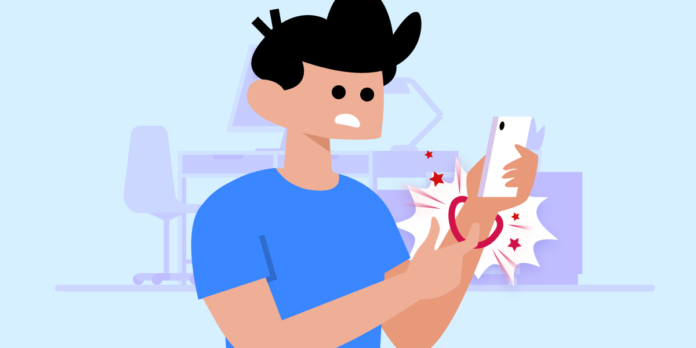Deliver an Improved Customer Experience on THEIR Screen
A technique people have used for years when trying to change a bad habit (smoking, snacking, swearing) is “the old rubber band trick.” Every time you think about the ‘bad behavior’ you simply give the rubber band a good hard SNAP!
It’s called aversion therapy, and it’s based on the principle that the negative association of a mild pain stimulus can help a person quickly retrain their impulsive instincts.
Maybe it’s time to snap the rubber band on your wrist every time a customer who was just on your website or app ALSO then picks up the phone to call your company.
The very fact that a customer felt they HAD to stop what they were doing online and then call–as opposed to getting help on their own screen (where their interaction almost certainly began)–represents a preventable “pain point” and an opportunity to create a more effortless service experience.
Customers live on their screens. All day, every day. When we have a need for information, assistance, or are just bored, we now instinctively reach for a mobile phone, tablet or laptop. Virtually all of us do it. The screen is now the center of our universe.
But far too many customer service interactions still happen on the phone. This is the exact opposite of meeting the customer where they are.
Now, this does not mean companies should never talk to their customers–just the opposite is true. No matter how digital your organization becomes, there will always be some situations in which a live voice interaction with an agent is exactly what that customer needs. But does that live contact have to be on the PHONE? Not any more.
In a guided, OnScreen Digital Customer Service (DCS) experience–even one that requires a combination of self-service and agent-assisted service–the customer never has to exert any effort to switch between modes. That is a ChannelLess™ experience and the handoff (if any) is completely seamless. The customer never has to break stride, or be forced to start all over again at Square One.
Serving your customers on their screen is the definition of customer-centricity. Making them call you on the telephone–in today’s world–should be thought of as a failure from now on.
Go ahead. Snap that rubber band. It hurts just enough that you won’t want to keep doing it.





